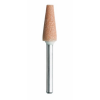I have decided to jump into the world of porting.
I have started with removing the sharper corners and around the valve guides
How much more can I take out before I lose too much bottom end?
Please be gentle it's my first attempt.
I still have to finish them off I just want to know if I should go further
I have started with removing the sharper corners and around the valve guides
How much more can I take out before I lose too much bottom end?
Please be gentle it's my first attempt.
I still have to finish them off I just want to know if I should go further
Attachments
-
1.9 MB Views: 61
-
2 MB Views: 59
-
2.9 MB Views: 64
-
1.9 MB Views: 58







